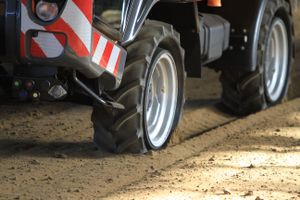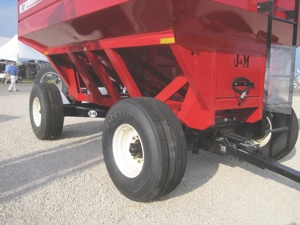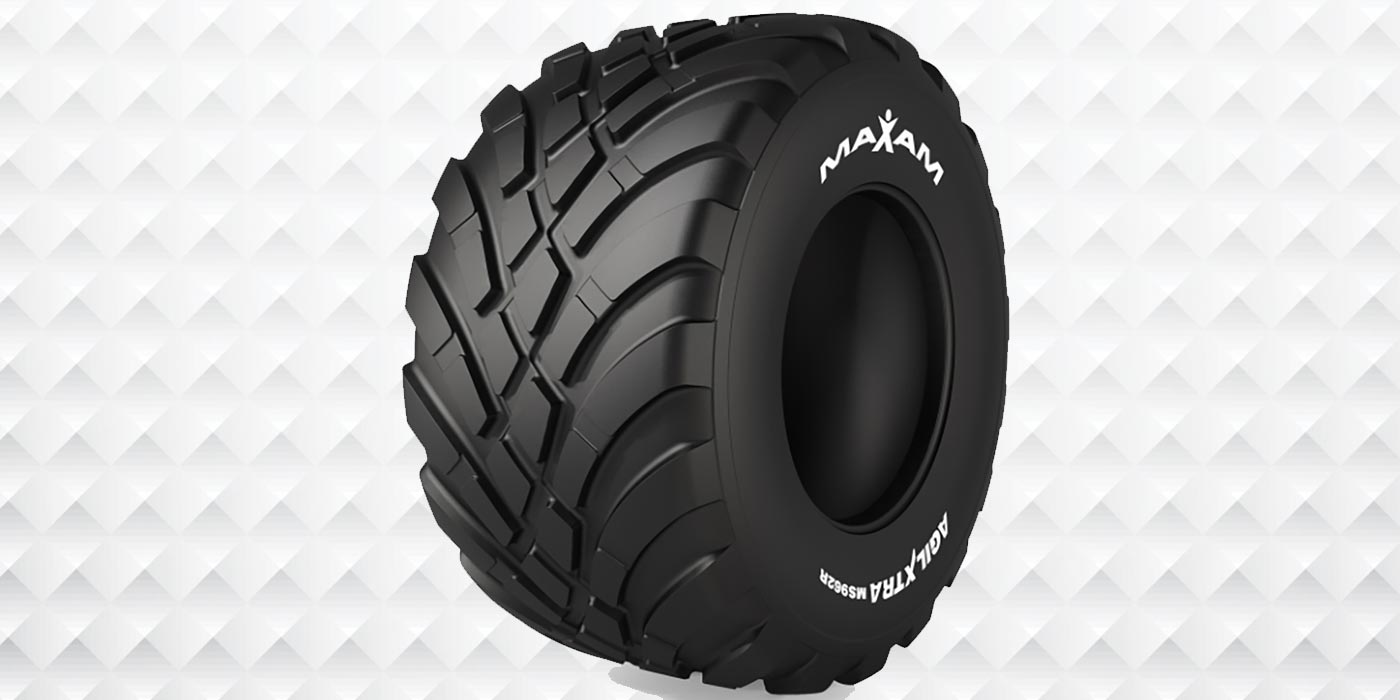While there was a drought for much of North America in 2012, the agriculture industry bounced back in 2013. In fact, net farm incomes for the U.S. in 2013 are expected to reach record amounts.
Projected net farm incomes are forecasted to be $131 billion, up 15.1% from 2012, according to the most recent report from the U.S. Department of Agriculture Economic Research Service. Adjusted for inflation, the year’s net farm income is expected to be the highest since 1973.
On the tire side, manufacturers say 2013 ag tire sales started strong and then slowed slightly due to various factors.
“It was a reasonable year, but you know we had a disruptive weather pattern both in the spring and in the fall, so it wasn’t normal so that did effect the market a little bit,” says Neil Rayson, senior vice president of sales for Mitas Tires North America.
“You know in generalities it started off pretty strong tapered off a bit,” says Scott Sloan, agriculture product manager for Titan International. “It wasn’t a record year, it was steady.”
“2013 was a good year,” says Tom Rodgers, director of sales and marketing for Firestone ag at Bridgestone Americas. “It started off great the first half, but then the last quarter this year saw a little bit of moderation in the market.”
Rodgers notes that hesitancy in spending toward the end of the year might have been due to uncertainty in the upcoming year and lower commodity prices.

Despite sales tapering off in the second half of 2013, tire manufacturers are predicting a decent year in 2014.
“Advance orders are on track and encouraging,” says Rayson. “We think 2014 could be pretty good.”
“I know this year was a good year for growers because although it was a weird year, yields were good,” says Sloan. “I think that’s given them a little bit of confidence going into next year and will help with the sales with ag equip.”
Carl Casalbore, president of BKT Tires USA, states that the tiremaker is so confident in growth in the agriculture tire and OTR tire business in the future that it’s “betting” on the business through expansion. Balkrishna Industries recently opened the company’s fourth factory, a nearly 300-acre facility in Bhuj, India, Casalbore says.
“In the U.S., we believe the economy is starting to come out of its doldrums,” Casalbore comments. “We believe the world is going to be growing as a general entity in farm and OTR.”
2014 Market Influences
There are several possible things that could influence the agriculture industry in 2014. Some influencers are unpredictable, such as weather or protectionist movements against grain or livestock in different countries worldwide, while other influencers involve legislation and policies in the U.S.
Legislation that could have an affect on the industry in this year is the 2014 Farm Bill. As of our production date, the bill had not yet passed by Congress.
“Since the Farm Bill has not passed yet, everyone is a little bit hesitant on doing what they need to do,” Casalbore explains. “So what does that mean for us? The business may go more on the replacement end because they’re fixing up old tractors. Or it could be they’re buying new tractors because the farm bill has passed and they feel fairly confident.”
Other policies that could have an impact on the industry include the Renewable Fuels Standard, created under the Energy Policy Act of 2005, and Section 179, Rodgers says. The Renewable Fuels Standard would affect the corn production in the U.S. in regard to ethanol.
Section 179 is a depreciation deduction that allows businesses to accelerate depreciation of equipment. If the section isn’t renewed, it might cut back on farmer’s purchases of new equipment, Rodgers notes.
He said most of the legislation, including the Farm Bill, would have some impact on the industry, but not a “terrible” one.
“I like to use the word moderation. I don’t like anyone to think that the market is taking a turn down,” he says. “Changes in legislation puts a hesitation in the buyers mind and that’s going to have an impact.”
Even if farmers decrease spending on new equipment, that’s not necessarily bad for tire sales. Sloan comments that during the drought in 2012 growers were investing money in fixing equipment rather than buying new equipment.
“What they’ll normally do is fix up what they have. A big part of that is tires,” Sloan says. “We don’t see the big ebb and flows as maybe a John Deere where the pipeline gets shut off because people stop spending money on new equipment. People still have to maintain their old equipment.”
Field Performance
For growers in North America and around the globe, the less soil compaction the better. Less ground damage means greater crop yields.
This coming year and in the future, tiremakers will focus on technologies that decrease soil compaction, but are capable of carrying heavier loads – for powered and trail equipment alike.
 “Farms are getting bigger, farmers have larger equipment and larger fleets of equipment and are much, much more cognizant of ground pressure, footprint and maintaining the soil in the best condition to maximize the yield,” Rayson says.
“Farms are getting bigger, farmers have larger equipment and larger fleets of equipment and are much, much more cognizant of ground pressure, footprint and maintaining the soil in the best condition to maximize the yield,” Rayson says.
Rodgers agrees and says farmers are becoming “acutely” aware of how tires and the proper tire inflation can affect their bottom line.
In the tire industry that means emerging increased flexion (IF) and very high flexion (VF) technologies are being used.
All the tiremakers spoke about how important the technology is on the farmer’s bottom line. IF and VF technologies allow growers to increase carrying capacity, while also decreasing inflation pressures.
“The industry standards that are out there for IF say a tire can carry 20% more load at the same inflation pressure as an equal size tire that’s just a standard radial,” Rodgers explains. “VF is actually 40% greater load carrying capacity at the same inflation pressure. On the flip side, if you don’t need that increased load and you want to maintain the same load, you can run at a lower inflation pressure.”
Another major concern for farmers is stubble damage. As plants – especially corn – are genetically enhanced the post-harvest remains in the field are getting stronger and puncturing tires.
“Stubble is a huge issue with growers. Unfortunately they still think a tire should be able to roll over a bamboo shoot and not have any damage on it. Stubble has become a pretty big industry concern,” Sloan comments.
The tiremakers also note that farming is getting more application specific and farmers are in search of the right tire for different equipment and uses.
In the future, the tiremakers are also exploring ways to enhance their respective IF and VF technologies and make it applicable for more machines. The tiremakers are also working on new technologies to meet the farmer’s needs.
Service Expectations
When it comes to meeting the needs of its customers, farm tire dealers must become experts in ag tires, the different tiremakers agree.
“Tire dealers need be specialized. As high performance is becoming very specialized in the U.S., so is farm business. Especially with the technology that is happening right now,” Casalbore says.
“They have to be committed to the farm tire business,” Rayson says. “They need to become as well educated as they can on soil protection and low ground pressure and being able to set up a tractor for maximum performance at the lowest possible air pressure, lowest safe air pressure. They need to be advising the farmer and helping him maximize the performance of this tires.”
In addition to being specialized, dealers must be able to service their customers promptly.
“A farmer has a small window of opportunity for planting, or for harvesting or for applying chemicals. If you don’t get planted in time, it’s going to start impacting your yield and impact the revenue down the line,” Rodgers says.
Rodgers notes that if a tire has an issue, the dealer must have a 24/7-service mentality, especially during key seasons.
If a tire dealer is looking to become an expert, it should reach out to its tire supplier. Each tire manufacturer notes they have various classes and programs that can help dealers better serve the end customer.
When it comes to picking one dealer over another, Sloan says it’s going to come down to whoever can “outrun their competitor on the field.”














